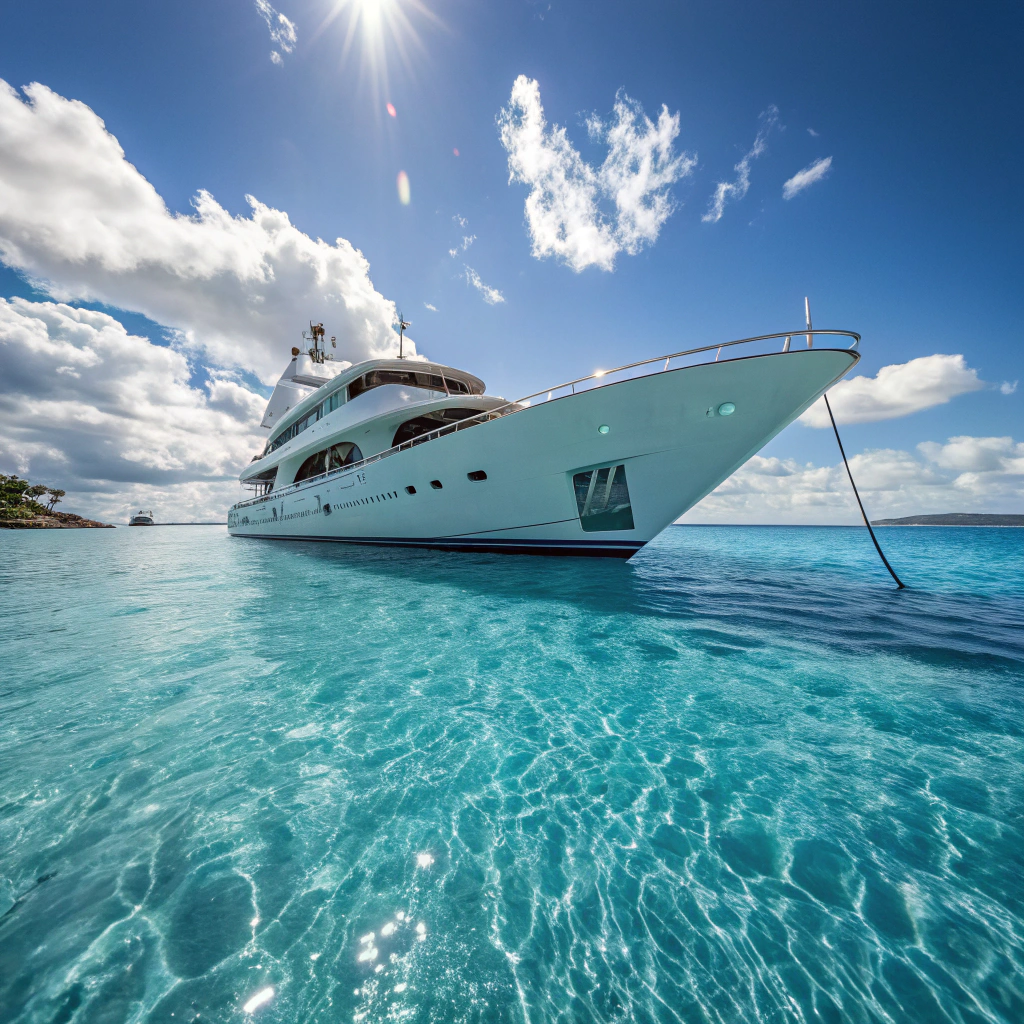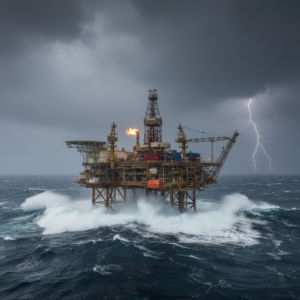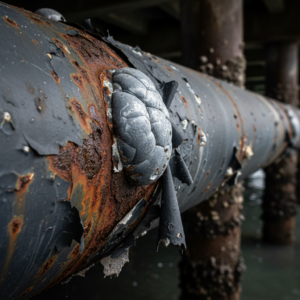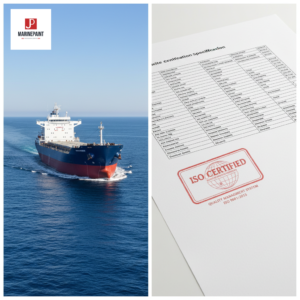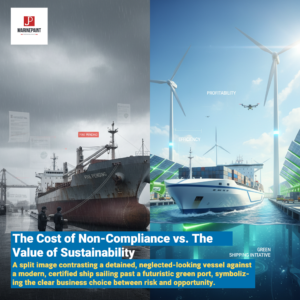The Ultimate Guide to Choosing and Using UV-Resistant Marine Paint
The sun is your boat's biggest enemy. It causes fading, chalking, and degradation, diminishing your vessel's value and appearance. You need a shield to protect your prized asset.
The best defense is a high-quality UV-resistant marine paint. This is not just any paint; it's a specialized protective coating engineered to combat the destructive effects of solar radiation. From an economic and protective standpoint, selecting the correct paint system from the very beginning is the most critical decision for long-term maintenance. A premium UV-resistant topcoat acts as a barrier, preventing solar radiation from breaking down the paint's chemical bonds—a process that leads to color fade, loss of gloss, and chalky residue. This guide will help you understand the essential types of coatings, how to apply them for a professional result, and how to maintain the finish for years of reliable service.
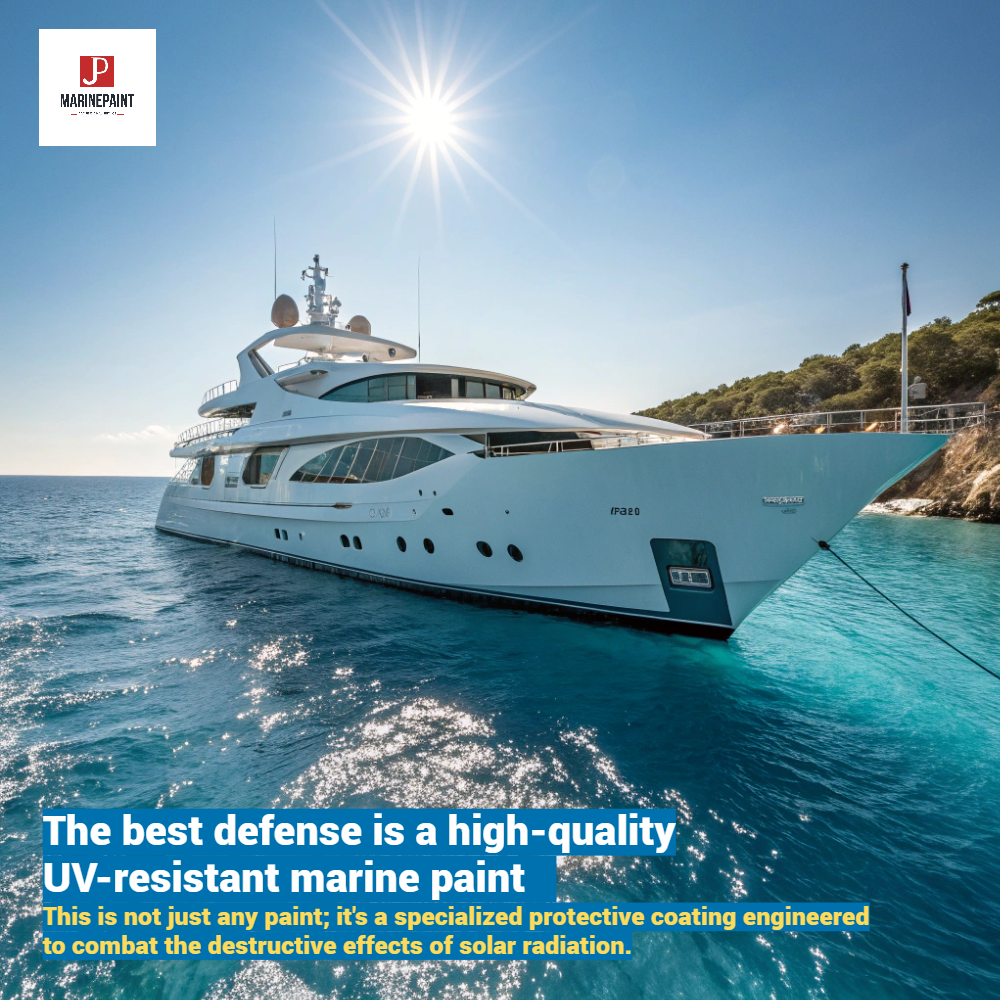
This article will walk you through everything you need to know, from understanding why this protection is essential to a step-by-step application process for a finish that lasts.
Why Your Boat Needs a High-Quality UV-Resistant Marine Paint
The relentless assault of sun and saltwater can make even the most beautiful vessel look tired and worn. This isn't just a cosmetic issue; UV radiation slowly degrades your boat's protective layers, leading to chalking, cracking, and eventual structural vulnerability. Ignoring this threat means accepting a steady decline in your boat's appearance and value.
A high-quality UV-resistant marine paint is your vessel's essential line of defense. The sun's ultraviolet rays are incredibly powerful, systematically breaking down the molecular structure of standard paints. This process is what causes vibrant colors to fade and high-gloss finishes to become dull. A specialized marine topcoat is formulated with advanced resins and pigments that provide superior weather resistance . The key benefits are immediately apparent: excellent color and gloss retention that keeps your boat looking new, enhanced durability against the elements, and robust protection from the corrosive combination of sun and salt spray. Investing in a proper protective coating system is the most effective way to preserve your asset's appearance and integrity.
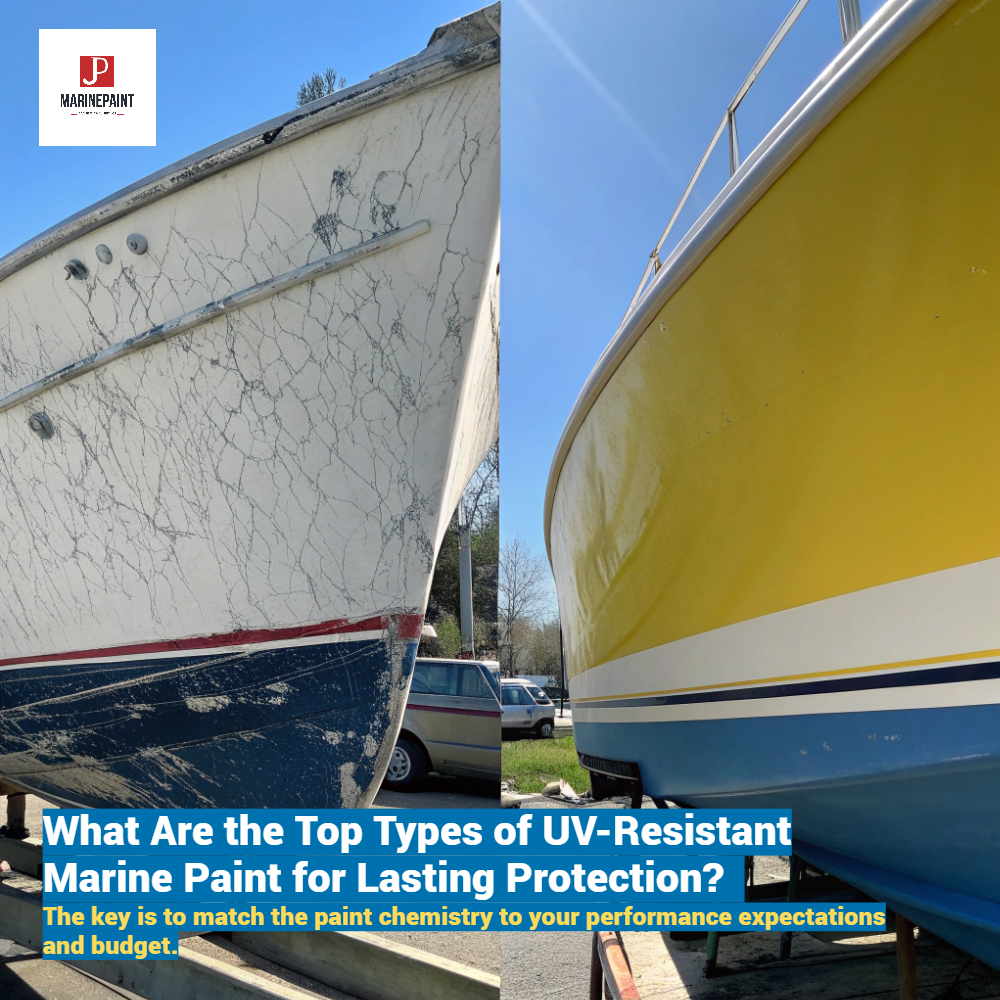
Top Types of UV-Resistant Marine Paint for Lasting Protection
Navigating the world of marine coatings can feel overwhelming. With terms like polyurethane, acrylic, and alkyd, choosing the wrong product for your specific needs can lead to a finish that fails prematurely, wasting significant time and money. An improper choice can mean you're back to sanding and painting far sooner than you planned.
The key is to match the paint chemistry to your performance expectations and budget. The best UV-resistant marine paint for your vessel depends on factors like desired lifespan, gloss retention, and ease of application. Generally, marine topcoats fall into three main categories, each offering a different balance of durability and cost. Understanding these options empowers you to select a coating system that will provide lasting protection and a brilliant finish.
Acrylic Polyurethane Topcoats: The Gold Standard in UV Resistance
Often considered the benchmark for topside finishes, two-part acrylic polyurethanes offer an unbeatable combination of performance and aesthetics. These coatings cure to a hard, tile-like finish that provides superior weather resistance and durability. Their key feature is exceptional color and gloss retention, meaning your boat stays vibrant for years. Furthermore, high-quality formulations are non-yellowing, a crucial feature for maintaining a crisp, clean look. Due to their robust nature, they are the preferred choice for protecting hulls and superstructures above the waterline. For a finish that combines durability with brilliant, long-lasting color, a product like our JD918 Acrylic Polyurethane Hull Paint (Yellowing resistance) sets the industry standard.
Fluorocarbon Topcoats: The Premium Choice for Extreme Durability
When only the absolute best will do, fluorocarbon coatings represent the pinnacle of marine protection technology. These high-performance topcoats are engineered for extreme environments, offering exceptional weather resistance, color retention, and gloss retention that surpasses other coating types. The incredibly stable fluorine-carbon chemical bond provides the longest possible lifespan, making it the ideal investment for high-value yachts, commercial vessels, and critical marine structures like bridges where maximum durability and minimal maintenance are the primary objectives. For these demanding applications, a system like JDFT810 Fluorocarbon Topcoat delivers ultimate asset protection.
Modified Acrylic and Alkyd Enamels: Reliable and Cost-Effective Options
For boat owners seeking a balance of reliable performance, ease of use, and value, modified acrylics and alkyd enamels are excellent choices. Modern single-part acrylics like JDB902 Acrylic Hull Paint offer good weatherability, gloss retention, and are very user-friendly. Traditional marine alkyd enamels, such as JDC43-31 Alkyd Hull Paint, are known for their good adhesion and protective qualities, providing a tough, attractive finish. While these coatings may not have the same extended lifespan as two-part systems, they provide durable and dependable protection that is perfect for many recreational boats and maintenance applications.
| Feature | Acrylic Polyurethane | Fluorocarbon | Modified Acrylic / Alkyd |
|---|---|---|---|
| Durability | Excellent | Exceptional | Good |
| UV Resistance | Excellent | Exceptional | Good |
| Gloss Retention | Excellent | Exceptional | Good |
| Cost | High | Premium | Moderate |
| Ease of Use | Professional (Two-Part) | Professional (Two-Part) | User-Friendly (One-Part) |
A Step-by-Step Guide to Applying UV-Resistant Marine Paint
Investing in a premium marine paint is only half the battle. Surface preparation is the most important factor, besides the paint's quality, in determining the durability of the final coating. A rushed job that skips critical steps will lead to failure, forcing you to strip everything off and start over.
A professional, long-lasting finish is built on a foundation of meticulous preparation and application. Following a proven, systematic process is essential for ensuring the paint adheres properly and delivers its full protective potential. From initial cleaning to the final coat, each stage plays a vital role. Adhering to these steps will ensure your investment is protected for years to come.
Step 1: Critical Surface Preparation for Maximum Adhesion
This is, without question, the most important stage. The cleaning sequence is critical: first remove dirt and debris, then de-grease, and finally, perform mechanical surface preparation. Even a thin layer of oil or grease can ruin adhesion. Use a suitable solvent or detergent, wiping with clean rags multiple times. To remove salt, which can cause blistering under the paint film, wash thoroughly with high-pressure fresh water, paying special attention to cracks and crevices.
For steel surfaces, the level of mechanical preparation is key. The best method is abrasive blasting to a Sa 2.5 standard, which removes all scale and rust, leaving a clean, profiled surface for the primer to grip. For smaller repairs or steel without oxidation, power tool cleaning (grinding, disc sanding) to an St3 grade is an acceptable alternative, creating a distinct metallic sheen. On previously painted surfaces or wood, thorough sanding is required to remove loose paint and create a "key" for the new coating to adhere to.
Step 2: Priming the Surface - The Foundation of Your Paint System
Once the surface is clean, dry, and profiled, applying a compatible primer is the next crucial step. The primer provides corrosion protection and creates a perfect adhesive layer between the substrate and topcoat. For steel hulls, a high-performance epoxy anti-rust primer like our JDH819 Epoxy Zinc Phosphate Primer or the JDH06-4 Epoxy Zinc-Rich Anti-Rust Primer offers a robust, anti-corrosive foundation. It is absolutely essential to use a primer that is chemically compatible with your chosen UV-resistant marine paint topcoat. Applying a polyurethane over an incompatible primer system can lead to widespread failure.
Step 3: Application - Brush, Roller, or Spray
With the surface primed, you are ready to apply the topcoat. There are three main application methods: high-pressure airless spray, brushing, and rolling.
- Spray Application: For large surfaces, high-pressure airless spray is the preferred professional method. It delivers a highly uniform, smooth finish and is the most effective way to apply paint to its specified dry film thickness (DFT).
- Brush/Roller Application: Brushing is excellent for priming patch repairs to work the coating into the surface profile. Rolling and brushing are suitable for smaller areas, but these methods may require additional coats to achieve the recommended film thickness.
Regardless of the method, always ensure environmental conditions are correct. The surface must be completely dry, and its temperature must be at least 3°C above the dew point to prevent condensation, which will compromise adhesion. Never paint in the rain or when humidity is too high.
Maintaining Your New UV-Resistant Finish
Your boat is finally painted and looks spectacular. The natural impulse is to relax, but the marine environment never does. Daily exposure to salt crystals, pollutants, and minor impacts can create weak points for degradation to begin if left unchecked.
The good news is that maintaining your new UV-resistant marine paint is simple. A straightforward and consistent care routine will dramatically prolong the life and beauty of the coating. Start with regular washing using fresh water and a mild boat soap. This simple act removes abrasive salt deposits that can dull the finish. Avoid using harsh chemical cleaners or abrasive tools. Finally, make a habit of regularly inspecting the paintwork for any chips or scratches. Addressing these minor damages promptly with a touch-up will prevent moisture from creeping underneath and causing underlying corrosion, ensuring the finish remains intact and protective for years.
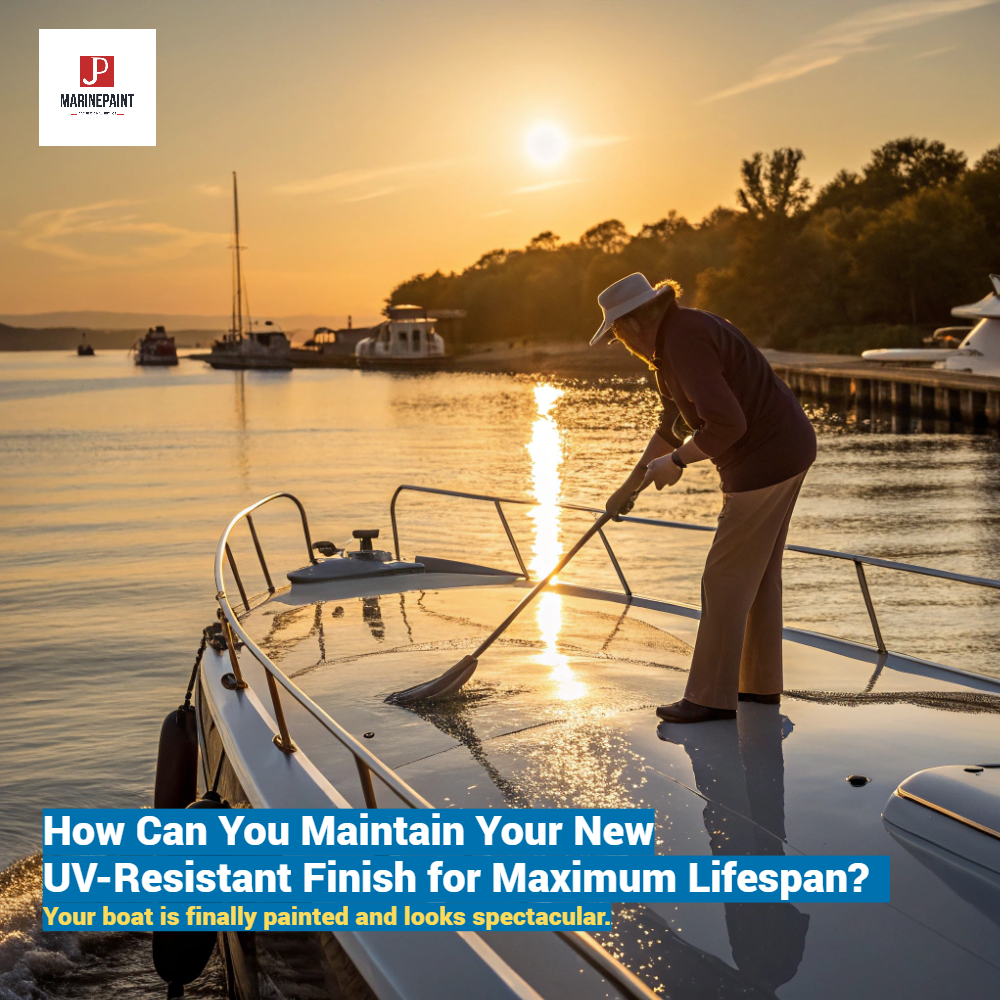
Frequently Asked Questions about UV-Resistant Marine Paint
Even with a comprehensive guide, specific questions often arise. Here are concise answers to some of the most common queries about UV-resistant marine paint.
What is the most durable UV-resistant marine paint?
For maximum durability and resistance to weather, two-part coatings are superior. Fluorocarbon topcoats offer the absolute peak in performance, followed closely by high-quality two-part acrylic polyurethane paints.
How long does UV-resistant marine paint last?
The lifespan depends heavily on the type of paint, quality of surface preparation, film thickness, and maintenance. A well-applied alkyd or acrylic enamel might last 3-5 years, while a premium two-part polyurethane or fluorocarbon system, applied over a proper primer, can last 7-10 years or more.
Can I apply a polyurethane topcoat over an old alkyd paint?
This is generally not recommended as the strong solvents in polyurethane can attack and wrinkle the underlying alkyd. To do this successfully, the old paint must be in excellent condition and a special "tie-coat" primer, like our JDH263 Epoxy Tie Coat, must be applied first. This product acts as a barrier, ensuring adhesion between the two different paint chemistries.
What is the difference between one-part and two-part paints?
One-part (or single-component) paints, like alkyds, cure by reacting with atmospheric moisture or simple solvent evaporation. Two-part (or two-component) systems, like epoxies and polyurethanes, consist of a base paint and a separate hardener that must be mixed before application. This chemical cross-linking process results in a significantly harder, more durable, and more chemically resistant finish.
Conclusion
Investing in a quality UV-resistant marine paint system is crucial for protecting your vessel. It preserves its value, enhances its appearance, and ensures its integrity for years to come.
![]()

